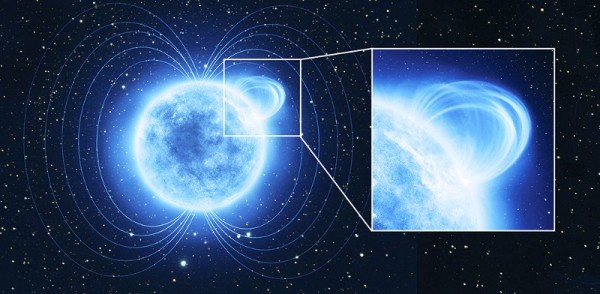“By allowing the positive ions to pass through an electric field and thus giving them a certain velocity, it is possible to distinguish them from the neutral, stationary atoms.” -Johannes Stark
One of the simplest tenets of electromagnetism -- the second of the fundamental forces ever discovered -- is that charged particles are accelerated parallel to electric fields, and are deflected as they move perpendicular through magnetic fields. In spectacular fashion, our Earth shows this latter phenomenon off as its bombarded by charged particles from the Sun.
 Image credit: NOAA Space Weather Prediction Center, University of Colorado CIRES, USGS; NASA / GOES-R.
Image credit: NOAA Space Weather Prediction Center, University of Colorado CIRES, USGS; NASA / GOES-R.
But there are more extreme objects than Earth with magnetic fields, including neutron stars, which contain magnetic fields at their surface about a trillion (10^12) times as strong as our planet's. But how can a supermassive object make a magnetic field if it's composed exclusively of neutral components? After all, doesn't it take moving-or-spinning charged particles to make a magnetic field in the first place?
Why are neutron stars magnetic at all? Come find out here.


You've got the gram masses of the neutron and proton switched.
The mag fields are supposed to decay with time, if something (presumably accretion) isn't feeding them. What is the mechanism of field loss?
Also we have the magnetars, where the field is much much larger, and the mass density of the energy in the mag field is really high. What fraction of the mass energy of such an object is the upper limit for mag field energy?